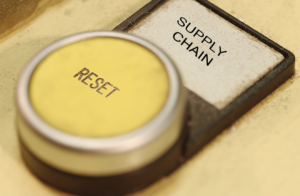Long before there was anything labeled the digital path to purchase, legendary retailer Sam Walton stated, “There is only one boss. The customer. And he can fire everybody in the company from the chairman on down, simply by spending his money somewhere else.” Whether a customer is shopping on-line or in a traditional brick-and-mortar store, he or she are never far from a device that can search prices, locate reviews, and/or obtain all sorts of other information about products and services. The staff at Think with Google explains, “Forget everything you know about the marketing funnel. Today, people are no longer following a linear path from awareness to consideration to purchase. They are narrowing and broadening their consideration set in unique and unpredictable moments. People turn to their devices to get immediate answers. And every time they do, they are expressing intent and reshaping the traditional marketing funnel along the way.”[1] Brahmajeet Desai (@brahmd), Director of Marketing at Kyvos Insights, adds, “Competition for customer dollars is stronger than ever. This means that in order to be successful, retailers will need to consider how build an engaging experience for existing customers while also building loyalty with any net new customers they are introduced to over the sales period.”[2] The point I’m trying to make is this: How consumers shop has changed dramatically and both online and traditional retailers must adjust to this new reality if they want to survive in the years ahead.
The changing nature consumer behavior
Although online retail has affected the most dramatic change to consumer behavior over the past few decades, there are other changes occurring to which retailers must also adjust. Robert J. Bowman, Managing Editor of Supply Chain Brain, reports income disparity is now having an impact on retail operations. He explains, “Just as the middle class finds its fortunes dwindling, forcing members either upward or downward on the economic scale, traditional mid-tier department stores such as Sears and J.C. Penney are struggling to survive. What’s left are purveyors of luxury goods and discount chains. A similar dynamic is emerging online. Both upscale and bargain stores are boosting their internet presence, according to Jose Mendoza, assistant professor of marketing at Sacred Heart University.”[3] The so-called Amazon Effect and income disparity have come together to create the retail apocalypse that has seen thousands of store closings. Bowman writes, “The real crisis in retailing, however, is occurring among mainstream, mid-priced chains. Consumers are abandoning traditional department stores in favor of specialty discounters like Marshalls and T.J. Maxx. Also continuing to thrive (although coming under heavy competitive pressure from Amazon and other e-tailers) are the big-box giants such as Walmart and Costco.” Clearly, most consumers are looking for the right combination of convenience and affordability. According to Mendoza, “If they don’t get convenience, then price is going to be the determining factor. [Retailers] in the middle don’t have a huge footprint.”
Chen Xiaodong, CEO of Intime, an e-commerce platform run by Alibaba, believes the days of the traditional brick-and-mortar store are numbered. He believes consumers have become so enamored with online shopping that the traditional relationship between consumer and retailer is being taken over by a new relationship between consumer and manufacturer. “Before, the controlling rights belonged to the retailer, Chen told CNBC’s Arjun Kharpalbut, “in the future it will shift to the manufacturer. The consumer will still be there, the manufacturer will still be there, but we need to consider who will be between these parties.”[4] He believes space once occupied by malls and department stores will transform into warehouses and fulfillment centers. Frankly, I’m a bit more optimistic about the future of traditional retail than Chen. Some online retailers have opted to have physical stores to complement their online sales. I doubt they would have gone that route if they believed the traditional store was dying. Additionally, numerous surveys have indicated people still enjoy shopping in a traditional store when they have the time. To encourage them to take time, retailers are turning their stores in destinations in which consumers can have exciting shopping experiences.
Most retailers will adopt mobile-first strategies
Because mobile technologies (aka smartphones) are so ubiquitous, consumers are on the digital path to purchase even when they are shopping in a traditional store. Whether searching for information, joining loyalty programs, or just providing point of sale data, consumers are leaving a trail of data footprints that can help retailers serve them better. The Think with Google staff insists the most important thing retailers can do is “be there.” They explain, “People now expect to be assisted everywhere. And that means it’s critical that you’re measuring and understanding the impact of your media touchpoints on the consumer journey.” Consultants from Techugo, a mobile app development company, naturally assert there is “nothing better than a mobile app platform” to promote your business and improve the bottom line.[5] They explain, “By getting your business on the mobile app, you stretch accessibility to the horizon and help your services get acknowledged and utilized with just a click on [consumers’] Smartphone.” Although Techugo clearly has a self-interest in promoting mobile apps, the company isn’t wrong about the importance of having mobile strategy in retailing. Rob Kinsella, Manager of the Customer Group at C.H. Robinson, notes, “Long gone are the days when retailers only stocked physical shelves with goods and sold merchandise to shoppers who made the trek to their store during business hours hoping to find what they were looking to purchase. As ecommerce has exploded (online retail has grown 300% from 2000 to 2018) and mobile devices and social media proliferated, the balance of power has shifted. Consumers are deciding when, where, and how they shop.”[6]
Concluding thoughts
Bowman writes, “A key trend in modern-day retailing is the blurring of the line between online and physical stores. … Regular stores can draw on tools such as image recognition and the Internet of Things to match the variety and novelty of online offerings. … Retailers must also be cognizant of a broader trend: the end of the big shopping mall as a social nexus. The younger generation doesn’t view malls as destinations for hanging out. They prefer to target specific stores and purchases, or do their shopping online. As a result, big ‘anchor’ stores are shutting down at a rapid rate, dooming the mall concept.” He cites Mendoza, who “sees a continuing opportunity for discount retailers, and recommends that sellers of food and groceries adapt the IKEA format of physical stores, combining wide selection with low prices. ‘Online is here to stay,’” he says, ‘but we’re human beings. We want to go outside. And some products need to be tried before you buy. So there’s an opportunity to become an experiential store.'” Part of that experience will undoubtedly involve the use of a smartphone.
Footnotes
[1] Staff, “How intent is redefining the marketing funnel,” Think with Google, 2019.
[2] Brahmajeet Desai, “Retailers and Big Data: How analyzing data can help meet consumer shopper demands,” Retail Customer Experience, 24 January 2019.
[3] Robert J. Bowman, “Online and In-Store, Retailers Must Adapt to New Shopping Trends,” Supply Chain Brain, 8 July 2019.
[4] Kavita Chandran, “Future of retail may see consumers dealing directly with manufacturers, predicts CEO of Intime,” CNBC, 28 November 2019.
[5] Techugo, “Reasons your mobile app is the best marketing strategy for your business,” WhaTech, 9 June 2018.
[6] Rob Kinsella, “The Evolution Of Retail And Customer Expectations,” Talking Logistics, 26 March 2019.





